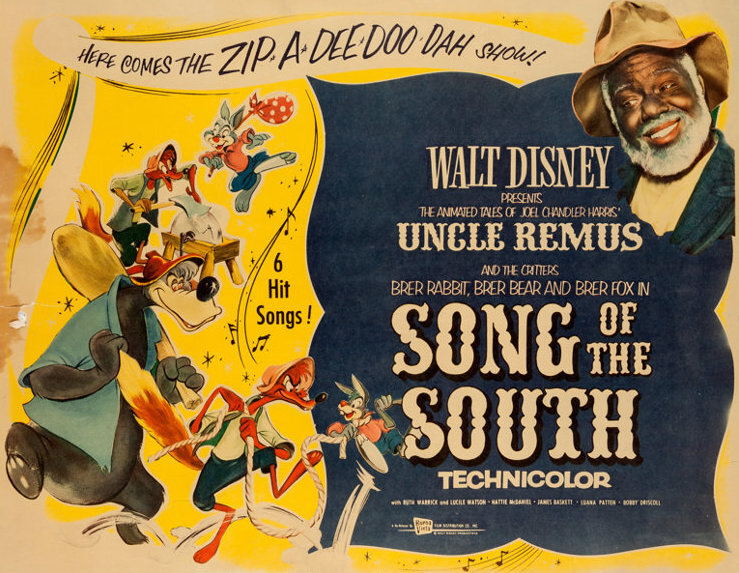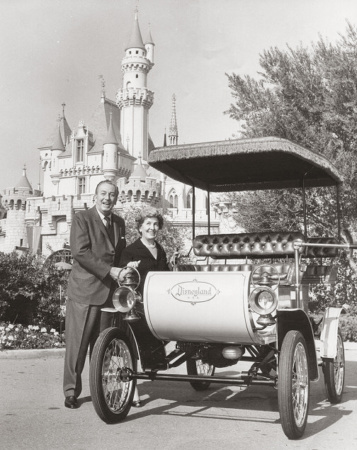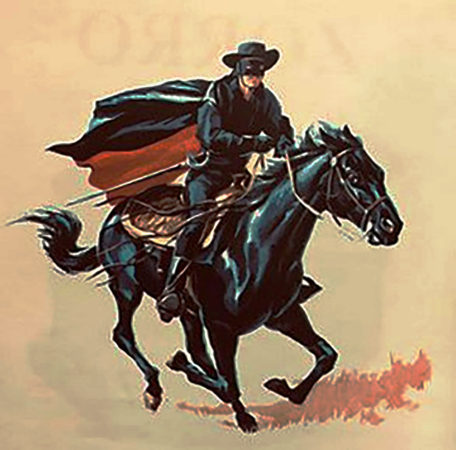
Disney’s “Splash Mountain”… Should it be re-imagined?
I have never disagreed with what Disney has planned, offered, re-imagined, removed or added since writing about everything Disney since 2005. Remember when Disney was going to add Captain Jack Sparrow and other characters from the franchise to the storyline? The internet was livid with complaints how that would destroy a Disney classic, but Disney did it right and it enhances the pirate’s tale. The Same with the Haunted Mansion, with the changed queue and graveyard. I had faith, and it was rewarded, the additions set the attraction’s bar even higher. Disney’s decision to re-imagine Splash Mountain, originally inspired by “The Song of the South” to reflect the film, “The Princess and the Frog”, I unhappily disagree.
Today, with the country striving to become even more politically correct in almost every aspect of life, and tensions rising to fever peak due to the George Floyd confrontation, it seems like everything we know is under Siege. However, the controversial “Song of the South” has be under scrutiny long before these times. I have the full, uncut film and have viewed it countless times. For me, and this is my opinion, I find the film the epitome of Disney storytelling. A poignant tale of our nation’s history, reflecting the changing and tempest times ahead. It was the first time Disney had an African American actor in a lead role in James Basket as Uncle Remus and Hattie McDaniel, the first African American to win an Oscar for her role as “Mammy in “Gone with the Wind”. Let us review a brief history of the Movie and the Attraction, so to better understand and reflect on both sides of the controversy…
The Song of the South was the compilation of stories by reporter Joel Chandler Harris. Harris was a reporter during the Reconstruction in Atlanta, and made his mark by accumulating these stories of Black American folktales and published them in a book in 1881. In these stories, “Uncle Remus” is the fictional narrator and main character in this book of tales. It has never been documented about how many of these tales are true, made-up or even amended for a white audience. These stories by Harris purports to represent the schism in the post-Civil War reconstruction period. He did so by using the dialect and framing such in his perception of the Negro deep south vernacular at the time. It was this that caused much of the debate. Song of the South, was released in 1946, less than a decade after ‘Gone with The Wind” stimulated a plethora of films about the southern States during the Reconstruction Era. It was a technical masterpiece, mixing animation and live action, while also introducing the world to the classic “Zip-A-Dee-Doo-Dah.” However, it had much controversial baggage.
Walt Disney had wanted to make a film based on these “Uncle Remus” stories for a long time. In 1938 he prepared two reports to check the possibility of filming these stories. In 1939, he negotiated the rights with the Harris family for the rights, for $10,000. Walt had originally wanted to develop Uncle Remus and his stories into an animated feature. Disney even visited the Harris’ property in Atlanta, telling Variety magazine that he wanted to “get an authentic feeling of Uncle Remus country so we can do as faithful a job as possible to these stories”. Disney intended to create a series of Remus films, if the first one was successful. The following stories would have different animations, but retain the same live-action cast.
Roy Disney had reservations that 25 minutes of animation did not justify over one million dollars, even if Walt planned to produce a series of Remus films. Walt finally agreed on one feature, one third of the film would be animation, the rest live action. At the time, Walt intended and judged the film a fantasy, aping his other features, not a historical piece. Instead of building upon fairy tales, this was to share American folklore. With the stories of Harris, Walt fashioned the story of a young boy named Johnny who visits his grandmother’s plantation, and while there, befriends Uncle Remus, a worker on the plantation. He and the other children are enthralled by the tales Remus spins about Br’er Bear, Br’er Rabbit and Br’er Fox. These tales help Johnny manage with life’s many challenges.
As stated in my above monologue, the film gave the leading role to African-American actor James Baskett. He initially answered an ad for voicing a talking butterfly. After hearing him speak, Walt met with Baskett face to face and tested him for the role of Uncle Remus. In addition to the lead role, Baskett voiced Br’er Rabbit for Johnny Lee, the American singer, dancer and actor in the Laughing Place scene, and Br’er Fox. Walt stated that Baskett was “the best actor, I believe, to be discovered in years”. After the film’s release, Walt kept in contact with Baskett and also lobbied for him for an academy award for his performances. Because of Walt, James Baskett was awarded an honorary Oscar in 1948. Child actors Glenn Leedy, Luana Patten and Bobby Driscoll headed up the children’ leads. The first actor to be under personal contract with the studios was Bobby Driscoll.
The film has 3 animated sections, all directed by Wilfred Jackson, totaling 25 minutes. In the last minutes of the film, the live-action combines with the animation. These 3 animated sequences were later used shown as individual cartoons on television. Musically, there are nine songs, all of the vocals by the African -American cast.

This is Walt’s storyline of Song of the South…
Seven-year-old Johnny and his parents are on their way to his grandmother’s plantation, which Johnny believes is an extended vacation. His parents, John Sr. and Sally, tell him that they will be living apart for a while, and he will live on the plantation with his grandmother and mother. His father is to return to Atlanta to his job as editor of the city’s newspaper. Johnny, saddened about his father’s departure decides to leave for Atlanta that night.
After sneaking away that night, Johnny hears voices, that of Uncle Remus telling the story of Br’er Rabbit to a group of kids. Noting that Johnny is gone, folks at the plantation begin to look for him. Although Johnny hides from the searchers, Uncle Remus finds him, and after questioning him, befriends him and even offers him food for his trip. Returning to his cabin with Johnny, he tells him the tale, “Br’er Rabbit earns a Dollar a Minute”. In this yarn, Br’er Rabbit runs away from home, but changes his mind after meeting with Br’er Bear and Br’er Fox. The story works, and Johnny let’s Uncle Remus take him back home.
Living on the plantation is a poor white girl, Ginny Favers, and Toby, a young black boy, and both become friends with Johnny. When Ginny’s two brothers Jake and Joe plan to drown a puppy, Ginny gives it to Johnny. To his disappointment, his mother forbids him have it, so he brings the dog to Uncle Remus. Using the dog as fodder for a new tale, Uncle Remus tells the kids the fable of Br’er Rabbit and Tar-Baby. The lesson is that people should not get entangled in affairs they have no business with. In the tale, Br’er Rabbit uses reverse psychology on Br’er Fox, and Johnny, using the same scheme, pleads with Ginny’s brothers not to tell their mother about the dog.
The ploy works and the boys go tell their mother, finally realizing Johnny made a fool of them. So, to get revenge, they tell Johnny’s mother Sally about the dog. She is furious that Uncle Remus and Johnny kept the dog despite her command not to. (Uncle Remus was not aware of her order). She insists that Uncle Remus not to tell Johnny and more stories.
It is Johnny’s birthday and a party is planned, so Johnny goes to pick up Ginny to escort her. While walking to the party, Ginny’s brothers Jake and Joe push her into a mud puddle. Her dress is ruined, she can’t go to the party and runs away crying. Johnny now is fighting with the brothers, but Uncle Remus intervenes, breaks it up and admonishes Joe and Jake. Johnny finds Ginny and tells her he does not want to go either, chiefly since his father will be absent. Uncle Remus encounters the two crestfallen children. He cheers them up with the tale of Br’er Rabbit and his “Laughing Place”. Upon returning to the plantation, Sally is furious with Johnny for missing his party, and takes her anger out on Uncle Remus, admonishing him to stay away from Johnny.
Uncle Remus crushed about the misinterpretation of what transpired, packs his bags and decides to leave also for Atlanta. Johnny is devastated, and tries to run away with Uncle Remus, but running through a pasture to try and catch Uncle Remus, a bull attacks and seriously injures him. Johnny is put in bed, but is lingering between life and death. In the interim, his father John returns. Johnny asks for Uncle Remus; his grandmother brings him. Uncle Remus again tells Johnny another tale of Br’er rabbit and his Laughing Place; and in a perfect Disney fashion, survives his injuries.
Now fully recovered, Johnny along with Ginny and Toby, are running around singing, and Johnny’s puppy joins them. Uncle Remus spies the children, and cannot believe his eyes when Br’er Rabbit and other characters from his tales appear and play with the children. Uncle Remus runs up to join the festivities and all together, the skip away into the sunset. Fin
The end result was for many, the culmination of all Walt learned in storytelling, animation and live action. The film premiered at the Fox Theater in Atlanta, on November 12th, 1946. The film earned $3.3 million at the box office, with the studio clearing a profit of $226, 000, more than $ 3.54 million in 2020 dollars.
There were many complaints and criticisms of the film. It was thought it romanticized slavery. Many thought the portrayal of African Americans were racist and extremely offensive. Many maintained that the Black southern dialect used and other nuances as stereotypical. Some even complained that the home and plantation is extolled and tranquil. There are some that, even though never stated in the film, say that Uncle Remus and other blacks desire the good old days. It is because of these concerns; Disney has not released the film in any format in the United States.
You can show 100 people a movie, car or a picture, an get 100 different opinions of each. The upshot is many misconstructions about the movie have been spawned over the years, because so many people have never even seen it, and must rely on opinions from others. Spike Lee once told Disney’s Floyd Norman he believes the film is racist, but admitted he had never seen it.
For as many who loved the film, and its many critics, hiding this film will not change, nor make our history go away. Even today, scholars still study the controversial silent film, “Birth of a Nation” and you can still get a copy of Hitler’s “Mein Kampf” online or in bookstores. This is how the world was in 1947, and during the reconstruction. We must learn from our past in order to perfect our future.
Please stop by next week for the history of the Attraction inspired by this movie, “Splash Mountain…” After reading the history of both venues, you can still see the uncut, remastered film on the internet. Now you are equipped to make your own rational, logical and informed opinion, should the film be hidden and should Splash Mountain be re-imagined…





